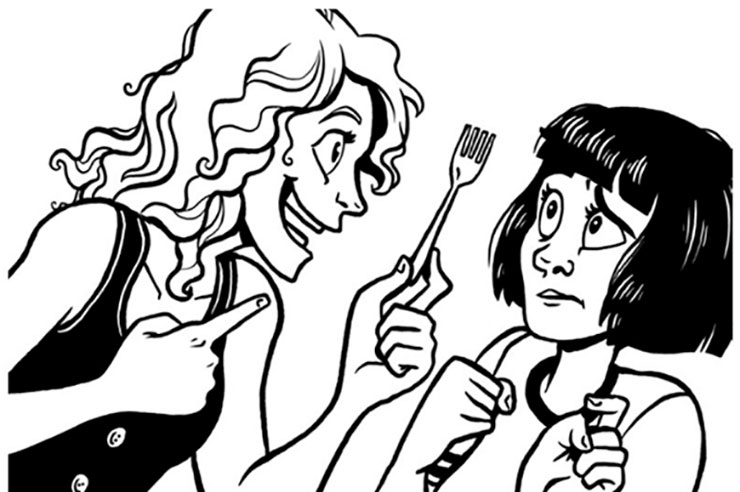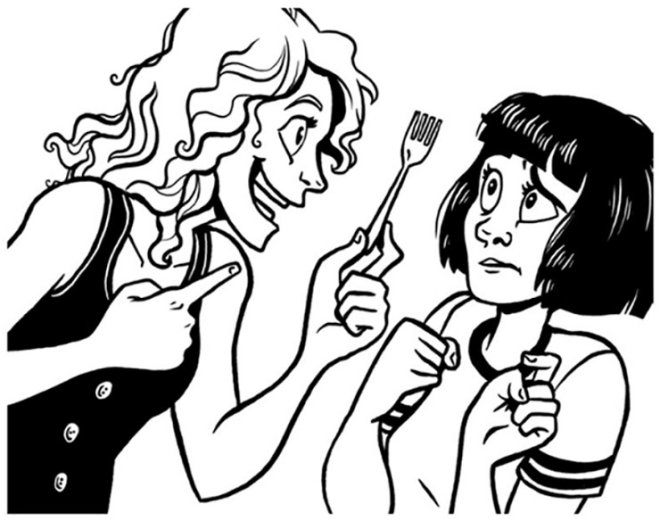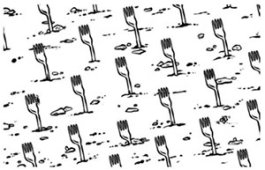
I have to say, the technique for keeping squirrels out of a garden that Emily-Jane Hills Orford shared in today’s story, 150 Plastic Forks, was new to me. The medium is—you guessed it—plastic forks.
It was new to her friend Susan too. You know a Susan too—the one with the picture-perfect garden and no yellow leaf nor blossom end rot in sight? I’d love to have one of those gardens too, but I just don’t.
And neither does Emily. Her garden is surrounded by forks. Susan asks whether they’ll get stepped on and break everywhere. Emily replies: “Uh-huh! And that scatters white plastic fork seeds so that more sprout up where they shattered.”
As you can already tell, this story is great for a giggle. And it reminds me that garden humor gives me the greatest laughs. I hope today’s story gives you a good chuckle too!
Discover 7 top tips for growing, harvesting, and enjoying tomatoes from your home garden—when you access the FREE guide The Best Way to Grow Tomatoes, right now!
A Little Gardening Humor Goes a Long Way
This story comes from our archive that spans over 30 years and includes more than 130 magazine issues of GreenPrints. Pieces like these that inject gardening humor into everyday life lessons always brighten up my day, and I hope it does for you as well. Enjoy!

150 Plastic Forks
The first thing that appears in my Spring garden.
By Emily-Jane Hills Orford

“What’s with the plastic forks?” my friend Susan asked.
“New crop,” I replied.
“Seriously?” She didn’t believe me.
“Seriously!” I looked out over my front yard, about a quarter of an acre of gardens and woodsy areas. It was early Spring and the only thing showing, so far anyway, were my white plastic forks. We had moved from the Ontario suburbs to our country dream home the previous Summer. This was to be our first full year on the property, the first full garden season to see what would come up and what I could entice to grow. Plastic forks, white ones of course, were a prime crop. For me, anyway.
“Why? There must be at least a hundred,” she exclaimed. “150 to be exact. I counted as I planted them, prongs up.” “Don’t they break when you step on them?”
 “Uh-huh! And that scatters white plastic fork seeds so that more sprout up where they shattered.”
“Uh-huh! And that scatters white plastic fork seeds so that more sprout up where they shattered.”
“Seriously?” My friend still wasn’t convinced. I cracked a smile. My poker face, such as it was, had lasted its limit.
“The squirrels and the chipmunks aren’t supposed to get past the prongs to dig up my Spring bulbs. I read about plastic forks somewhere and decided to give it a try. We have lots of squirrels of all different shapes, sizes and colors. Lots of chipmunks, too.”
“Does it work?”
“If my bulbs grow, we’ll know it worked. If they don’t, then my 150 plastic forks were a wasted investment.”
“Why white?”
“Cheaper.”
“But they’re so visible,” she grumbled.
Susan had a picture-perfect garden. Every year. Without fail. Nicely trimmed hedges, crisp edging, weed-free, nothing brown or half-dead. Like I said, picture-perfect.
“Only until the gardens come to life. Then you won’t see the forks.”
“You mean you don’t plan to pick them up?”
I chuckled. “No. I’ll let them reseed themselves for next year.” “I still think a dark color would be better,” she challenged again. “A deep red would blend in so much better.”
“And no one would notice,” I added.
“Exactly.”
“But I want people to notice,” I argued. “My white plastic forks make for some interesting conversations. Like this one!” I reached around Susan’s shoulders and pulled her into a hug. We hadn’t seen each other in a while, so a hug was in order. She really wasn’t much of a hugger, but she relented. Briefly.
Susan shook her head as she followed me indoors for an early lunch. My white plastic forks were soon forgotten. When she next visited me, it was mid-July and there was no sign of white plastic forks. My garden, as I had predicted, had grown up and hidden them. And my bulbs, having bloomed and died back, were safe in the ground, uneaten by my growing squirrel and chipmunk population.
“Still in the fork farming business?” Susan asked teasingly.
“Absolutely,” I proclaimed. “Only now I have more than 200 white plastic forks in the garden.”
“Oh? Did they multiply?” she said critically.
“Yes, indeed,” I replied. “I’m thinking of becoming a market gardener.”
“Really?”
“Well, lots of gardeners sell homegrown vegetables to restaurants. But how many sell them homegrown forks?”
This time, even Susan laughed. Finally. ❖
By Emily-Jane Hills Orford, published originally in 2020, in GreenPrints Issue #121. Illustration by Hannah England.

Did you enjoy this gardening humor story? Please tell us how it made you feel when you read this cheeky piece.
Discover 7 top tips for growing, harvesting, and enjoying tomatoes from your home garden—when you access the FREE guide The Best Way to Grow Tomatoes, right now!




